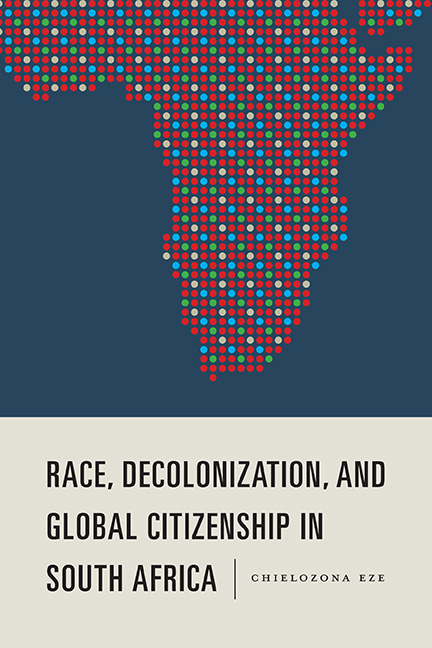Book contents
- Frontmatter
- Dedication
- Contents
- Preface
- Acknowledgments
- Introduction: New World Order, New Moral Challenges
- 1 Theorizing the Present: Sources of the New Moral Self in South Africa
- 2 Nelson Mandela and Desmond Tutu as Global Citizens
- 3 The Violence of History and the Angel of Forgiveness
- 4 The Challenges of Cosmopolitan Thinking in a Postapartheid Society
- 5 Of Xenophobia and Other Bigotries: Forging Transcultural Visions
- 6 Narrating Ubuntu: The Weight of History and the Power of Care
- Conclusion: South Africa in Search of a New Humanism
- Notes
- Bibliography
- Index
1 - Theorizing the Present: Sources of the New Moral Self in South Africa
Published online by Cambridge University Press: 24 July 2019
- Frontmatter
- Dedication
- Contents
- Preface
- Acknowledgments
- Introduction: New World Order, New Moral Challenges
- 1 Theorizing the Present: Sources of the New Moral Self in South Africa
- 2 Nelson Mandela and Desmond Tutu as Global Citizens
- 3 The Violence of History and the Angel of Forgiveness
- 4 The Challenges of Cosmopolitan Thinking in a Postapartheid Society
- 5 Of Xenophobia and Other Bigotries: Forging Transcultural Visions
- 6 Narrating Ubuntu: The Weight of History and the Power of Care
- Conclusion: South Africa in Search of a New Humanism
- Notes
- Bibliography
- Index
Summary
The South African TRC made difficult demands on South Africa's oppressed and exploited people; it asked them to forgive their oppressors. The TRC's mission is further complicated by the absence of structural programs of sufficient scope and extent to address the basic living conditions of those impoverished by centuries of exploitation, forced displacement, forced labor, and other crimes against humanity. Yet there is no question that the acts of forgiveness made a profound humanist statement about South Africans and the future of their society. The peaceful transition that the TRC brought about, and that was characterized by the ritual of forgiveness, established a moral framework of belongingness and care in postapartheid South Africa. What is a moral framework, and what is its place in a civil society?
We are what we are because we live by certain norms that guide our interpersonal relations. As individuals and as communities, we are endowed with moral and spiritual intuitions that take the form of values and goals. The philosopher Charles Taylor argues that we cannot afford the “ethics of inarticulacy” in regard to these intuitions; that is, we cannot rely on raw instincts if we are to maintain our society as one that respects individual rights and dignity. We need frameworks to sustain and justify those values and intuitions. He explains that “what is articulated here is the background we assume and draw on in any claim to rightness, part of which we are forced to spell out when we have to defend our responses as the right ones.” When Taylor speaks of frameworks within which we articulate and make sense of our experience, he speaks of a moral space within which we define ourselves. He states: “My identity is defined by the commitments and identifications which provide the frame or horizon within which I can try to determine from case to case what is good, or valuable, or what ought to be done, or what I can endorse or oppose. In other words, it is the horizon within which I am capable of taking a stand.” What this means is simply that to exist as humans is to exist within a frame of meaning.
- Type
- Chapter
- Information
- Publisher: Boydell & BrewerPrint publication year: 2018



